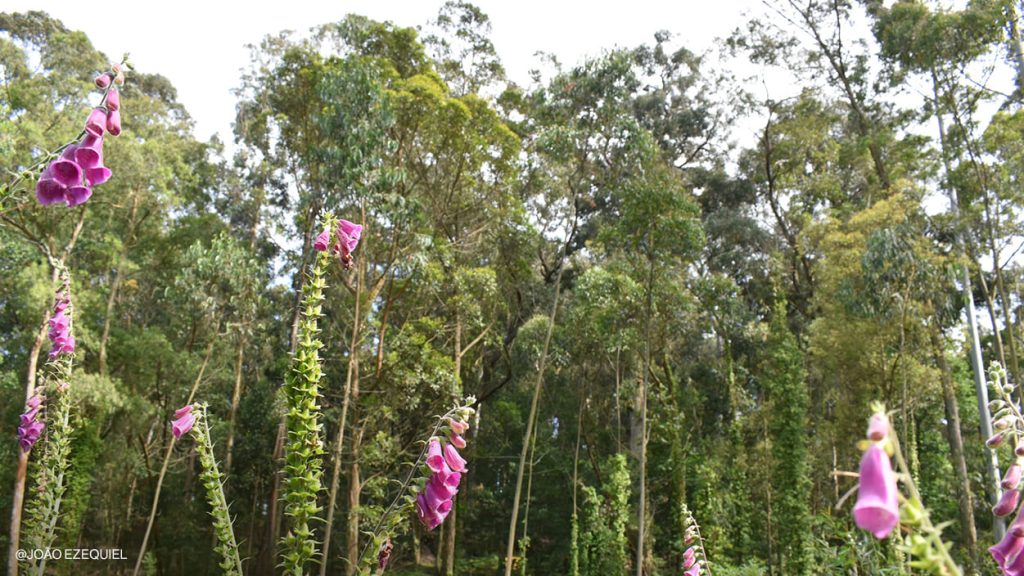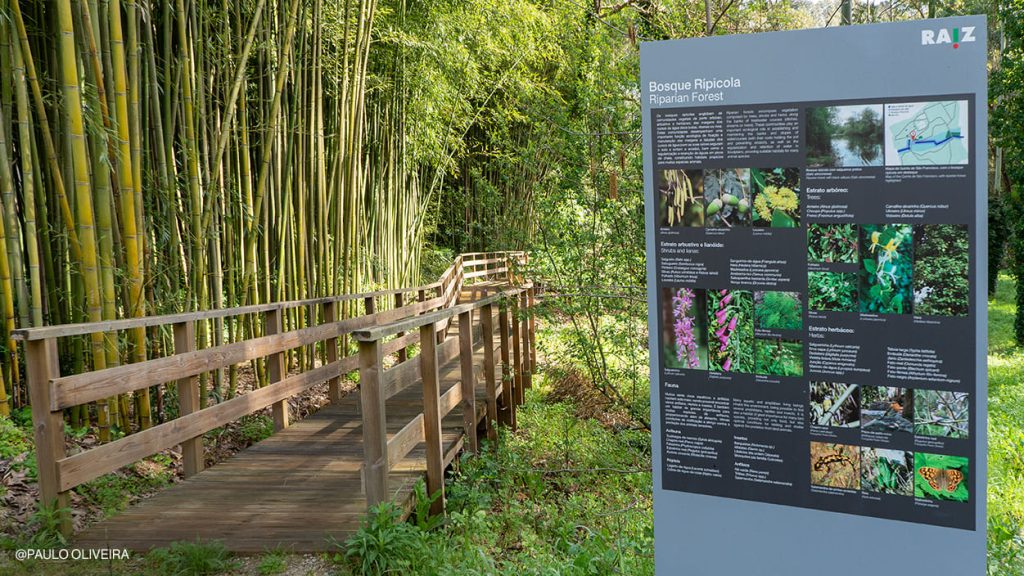The vegetation is lush and extends as far as the eye can see, with more shades of green than it is possible to name. This is how it is at Quinta de São Francisco, a haven of biodiversity, a stone’s throw away from Aveiro.
Among the autochthonous plants and those from all four corners of the world, there are more than 400 species of flora that make Quinta de São Francisco a unique natural setting in Portugal. The secret of such an extensive botanical collection is the result of the geography and climate of the place where this Quinta, or estate, is located and of the passion of its founder, Jaime de Magalhães Lima (1859-1936), a thinker, poet, and essayist, who wanted to surround himself with what fascinated him the most – nature.
Just 10 minutes from the centre of Aveiro, south of the village of Eixo, Quinta de São Francisco is located in a sheltered valley, roughly 30 metres above sea level, known locally as Vale de Soão, on account of the stream that runs through it, a tributary of the Vouga River. Added to these features is the fact that it is located in an area of transition between the Temperate and Mediterranean macrobioclimates, which allows for the good adaptation of the typical flora of both regions and even of species from tropical and boreal zones.
In taking advantage of these peculiar conditions, Jaime de Magalhães Lima took care of the species that naturally grew there and, at the beginning of the 20th century, he added hundreds of specimens from far away, which he wanted to study and observe.
Among the trees and shrubs, there are numerous autochthonous species, with centenary specimens of Common oak (Quercus robur) and other species of this botanical genus, such as cork oaks (Quercus suber), or Lusitanian oak (Quercus lusitanica). Among dozens of others, maritime pines (Pinus pinaster), willows (Salix spp.), alders (Alnus glutinosa ), ash trees (Fraxinus angustifolia), elms (Ulmus minor), elderberries (Sambucus nigra), bay trees (Laurus nobilis), strawberry trees (Arbutus unedo), and Ruscus aculeatus, the latter known as “butcher’s-broom”.
The great diversity of flora, the presence of abundant water (in addition to running water, there is a lake and several ponds), the abundance of fungi that enrich the soil (about 50 species of mushrooms have been identified) are elements that come together across dozens of habitats: an invitation to the most diverse range of animals, from birds to mammals.
With regards to just birds, about 70 species have been identified, 10 of which are of prey, such as the common buzzard (Buteo buteo) and the sparrowhawk (Accipiter nisus), which are both resident. Some can be seen high in the sky, like the peregrine falcon (Falco peregrinus), others, like the jay (Garrulus glandarius), nest in large eucalyptus and oak trees, and many others, no less spectacular, can be heard and seen on branches and foliage, from kingfishers (Alcedo atthis) to firecrests (Regulus ignicapillus) through to various members of the tit family (Parus spp.) and woodpeckers, such as the great spotted woodpecker (Dendrocopos major) that we see in the photo above.
In terms of amphibians, the common toad (Bufo bufo) and the orange-bellied newt (Triturus boscai) are frequently seen. Among reptiles, the largest is the Montpellier snake (Malpolon monspessulanus) and the rarest is the Iberian emerald lizard (Lacerta schreiberi), a species that only exists in the wild in the Iberian Peninsula (endemic). As for insects, there are numerous pollinators and some of their predators, such as the huge blue emperor dragonfly (Anax imperator) and the largest insect in Europe, the European stag beetle (Lucanus cervus).
There is also no shortage of mammals, both those that live in Quinta de São Francisco and those that scour it in search of food: red foxes (Vulpes vulpes), red squirrels (Sciurus vulgaris), and hedgehogs (Erinaceus europaeus) are three of about two dozen species on the estate.





